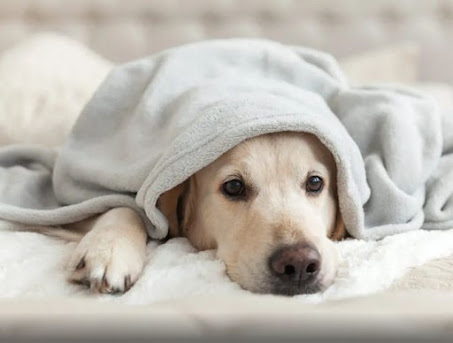How do I get rid of parvo in dogs?
Parvovirus, commonly referred to as "parvo," is a
highly contagious virus that can affect dogs of all ages, but is most commonly
found in puppies. It attacks the gastrointestinal system and can be fatal if
left untreated. Fortunately, there are several steps you can take to get rid of
parvo in dogs.
1.
Take Your Dog to the Vet
The
first step in treating parvo in dogs is to take them to the vet. The vet will
perform a physical exam and may run blood tests to confirm the diagnosis. If
your dog is diagnosed with parvo, your vet will likely recommend
hospitalization, as parvo can be deadly if not treated promptly.
2.
Hospitalization
When
your dog is hospitalized, the vet will provide supportive care, including
fluids, antibiotics, and anti-nausea medication. The goal of hospitalization is
to keep your dog hydrated and to prevent secondary infections from developing.
Your dog may need to stay in the hospital for several days, depending on the
severity of the infection.
3.
Hydration
Parvo
can cause severe dehydration, so it's important to keep your dog hydrated
throughout the treatment process. If your dog is hospitalized, the vet will
provide intravenous fluids to help maintain hydration. If your dog is at home,
you can provide small amounts of water or ice chips to keep them hydrated.
Avoid giving your dog large amounts of water or food at once, as this can cause
vomiting.
4.
Nutritional Support
Parvo
can cause a loss of appetite, which can lead to malnutrition. It's important to
provide your dog with nutritional support during the recovery process. Your vet
may recommend a bland diet of boiled chicken and rice or a prescription diet
that is easy to digest. It's important to follow your vet's recommendations
regarding diet to help your dog recover.
5.
Isolation
Parvo
is highly contagious, so it's important to isolate your dog from other dogs
during the recovery process. This means keeping your dog away from other dogs,
including those in your home, until they have fully recovered. It's also
important to clean and disinfect your home and any areas where your dog has
been to prevent the spread of the virus.
6.
Cleaning and Disinfecting
Parvo
can live in the environment for several months, so it's important to clean and
disinfect any areas where your dog has been. This includes bedding, toys, food
and water bowls, and any surfaces your dog has come into contact with. Use a
bleach solution or a disinfectant that is specifically designed to kill parvo.
7.
Vaccination
Prevention
is key when it comes to parvo. The best way to protect your dog from parvo is
to make sure they are up-to-date on their vaccinations. Puppies should receive
a series of vaccinations starting at six to eight weeks of age, with boosters
every three to four weeks until they are 16 weeks old. Adult dogs should
receive a booster vaccination every one to three years, depending on the
vaccine.
Read more: “Beat parvo with
homeopathy”
In
conclusion, parvo is a serious illness that requires prompt treatment and
supportive care. If you suspect your dog has parvo, take them to the vet right
away. With the right treatment, most dogs will recover from parvo, although it
can be a lengthy and expensive process. The best way to protect your dog from
parvo is to make sure they are up-to-date on their vaccinations and to take
steps to prevent the spread of the virus.




Comments
Post a Comment